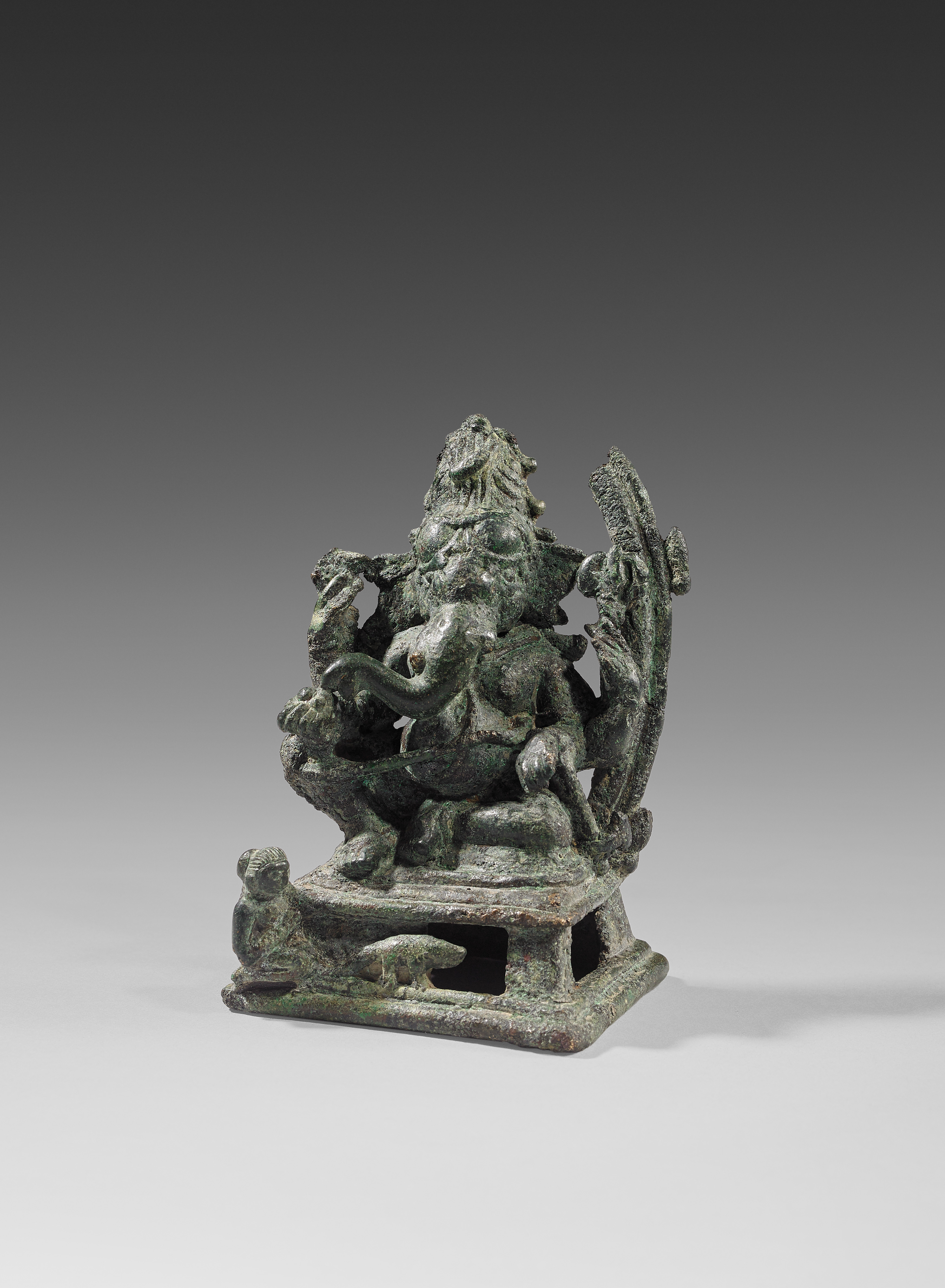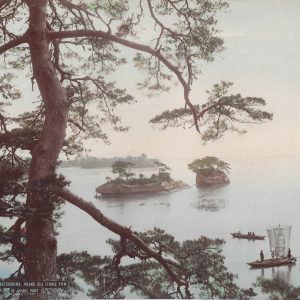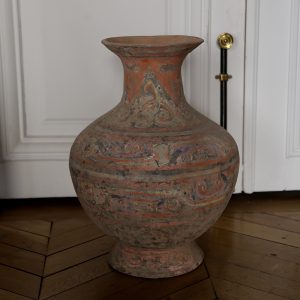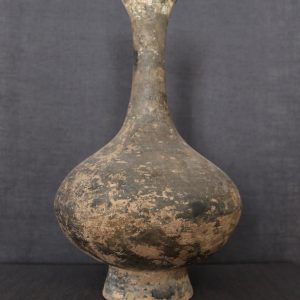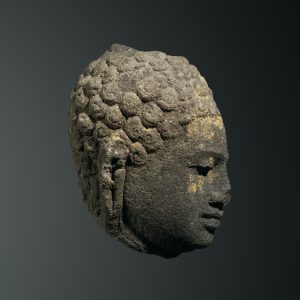- Sorry, this product cannot be purchased.
Ganeśa
Bronze
Eastern India
Pala period, 10th century
H. 8 cm
Description
Made in bronze and dated from the 10th century, the piece comes from Eastern India in the heart of the Pala kingdom and is 8 cm high. Well-known as the elephant-headed god, Ganeśa is one of the most popular gods in the Hindu pantheon, as can be seen by the great number of replicas throughout the Subcontinent. He is worshiped fervently by all: both lower castes and Brahmans, who offer up a prayer to him before every ceremony.
Light is a metaphor for wisdom: Ganeśa, the god of knowledge, removes obstacles and makes rituals, as well as any human undertaking, run smoothly. He is therefore particularly worshiped on this festive day.
As usual, this beautiful bronze depicts the god with a protuberant belly and sitting in lalitasana. From his first right hand he holds a round sweet, while with his second left hand he brandishes the ax that serves to destroy all negative forces. He has only one tusk because he broke off the second to transcribe the epic saga of the Mahābhārata.
Characteristic of the Pala period, the details of the face and the hairstyle in ascetic bun are finely rendered. A worshiper in a praying position kneels at his feet.
Provenance : Private collection, Germany.
Art Loss Register Certificate, ref. S00092046

